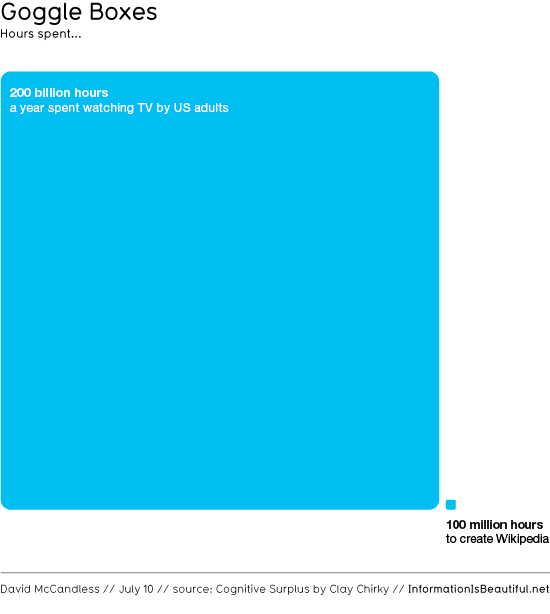Rethinking Idle Time
This weekend, I was playing around with my new Amazon Kindle 3. I was loading as many classics (Plato, Aristotle, Sun-Tzu and Cory Doctorow) that are freely available onto the Kindle, on the hunch that whenever I would have some idle time, I would use it to reflect on the great thinkers of all ages. It reminded me that for several years, I had wanted to write on the topic…
Idle time is a concept that was introduced into the English language quite early, as an action that is void of any real worth, usefulness, or significance; leading to no solid result; hence, ineffective, worthless, of no value, vain, frivolous, trifling. [Oxford English Dictionary] First mentioned in 825: Dryhten wat eohtas monna foron idle sind (whatever that actually means in modern day English). Idleness always carried a negative connotation. Only in the 21st Century, has idle time turned into the biggest asset humanity has at its disposal to create value.
The metaphorical mapping of the term from the human to machinery arrives in the 19th Century, as in to run idle, to run loose, without doing work or transmitting power. first found in a patent application by Mr Milton in 1805 (Patent No. 2890) “As near..to each active wheel as a workman may think proper, low, strong idle wheels..are to be placed..ready in case of an active wheel coming off, or breaking, or an axle-tree failing, to catch the falling vehicle.”
In the 20th Century, it expanded its use to computers, where it is defined as the time during which a piece of hardware in good operating condition is unused. With networked computers, the idea was that idle time of distributed processors could be put to good use, as long as it can be managed – SETI@home is only one example.
In the 21st Century, when suddenly big user-generated content projects appeared (Wikipedia, Linux, Apache, but also Facebook, Flickr, and Ushahidi), one of the questions raised was about the sustainability of these projects, connected to the idea of “where did the time come from to produce this content?” – At Web 2.0 Expo 2008 and later in his book Cognitive Surplus (2010) Clay Shirky gave where he argues that we are finally able to activate the cognitive surplus generated by industrialization which up to now we had squandered away by watching television.
Television was a solitary activity that crowded out other forms of social connection. But the very nature of these new technologies fosters social connection—creating, contributing, sharing. When someone buys a TV, the number of consumers goes up by one, but the number of producers stays the same. When someone buys a computer or mobile phone, the number of consumers and producers both increase by one. This lets ordinary citizens, who’ve previously been locked out, pool their free time for activities they like and care about. So instead of that free time seeping away in front of the television set, the cognitive surplus is going to be poured into everything from goofy enterprises like lolcats, where people stick captions on cat photos, to serious political activities like Ushahidi.com, where people report human rights abuses.

This transformation from a mass society with its one-to-many media (television) to a network society of many-to-many media (web 2.0) allows us to capitalize on idle time. By segmenting value chains into modular and granular tasks, where anybody can chime in anytime and anywhere.
Shirky’s idea of idle time, however, only touches the surface of the concept. Idle time spent in front of the television that can be reallocated into socially meaningful values makes up a big chunk of the cognitive surplus that we will be able to capture in the next years. However, the bigger part will be captured, when we are able to transform actual idle time into productive time: the idle time when waiting for something/someone, the idle time of the disenfranchised on this planet, the idle time of being between tasks, and the idle time of not working on what fullfills us. So, idle time is about empowering those that are not yet empowered, but also about when you are in the board meeting and bored. Idle time is everywhere! Think of it through the lense of fractal geometry – idle time is self-similar. Once you start looking, you will find it in all aspects of life. My back of the envelope hunch would be that we can multiply Shirky’s number by at least two or three.
Idle Time vs. Down Time: Managing our Wetware Needs
But as soon as we have solved this puzzle, where all this productive capacity for our common futures will come from, we come to the next Luddite summer worry (actually, one of the most emailed articles in the NYTimes this summer):
The technology makes the tiniest windows of time entertaining, and potentially productive. But scientists point to an unanticipated side effect: when people keep their brains busy with digital input, they are forfeiting downtime that could allow them to better learn and remember information, or come up with new ideas.
“Almost certainly, downtime lets the brain go over experiences it’s had, solidify them and turn them into permanent long-term memories,” said Loren Frank, assistant professor in the department of physiology at the university, where he specializes in learning and memory. He said he believed that when the brain was constantly stimulated, “you prevent this learning process.”
The findings are to be taken seriously and it clearly means that we need to be careful with how we deal with our idle time. In the digitally networked age, we need to take responsibility for our sanity. We need to learn how to schedule downtime and offline-time. But theoretically, that should be easier, because now we can manage our interfaces to the digital network, by blocking incoming information.
And this brings me back to the Amazon Kindle: The Kindle does only one thing, it lets you read books. It does that particular well, with a look that is distinctly Steampunk and after 48 hours it clearly seems to be one of those devices that actually allows you to manage your brain cycles and give your brain that downtime that it needs to solidify impressions into knowledge.
 Author of machiavelli.net, proud father of three, interested in shaping network society. Welcome to my blog.
Author of machiavelli.net, proud father of three, interested in shaping network society. Welcome to my blog.
why do you list Apache among “user generated content projects”? and why linux? I find that quite arbitrary even though I have a hunch… I think you are not very consistent in your use of what you mean by user generated content. if you are talking content generation, you would have to exclude everything but flickr, wikipedia, etc, where actual content is generated. open source software is not content generated by users, but software coded by a network of people…..